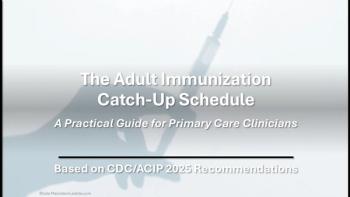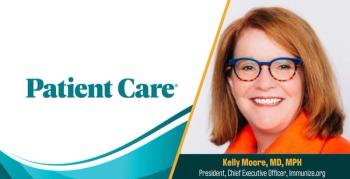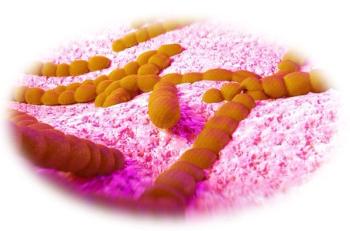
Standard TB Care May Fail Those With HIV
SAN FRANCISCO -- A standard six-month course of treatment for tuberculosis may not be sufficient to cure patients co-infected with HIV, researchers here say.
SAN FRANCISCO, June 1 -- A standard six-month course of treatment for tuberculosis may not be sufficient to cure patients co-infected with HIV, according to researchers here.
In a retrospective look at TB cases reported to the San Francisco Tuberculosis Control Program from 1990 through 2001, those with HIV were nine times more likely to have a relapse, found Payam Nahid, M.D., of the University of California San Francisco.
The relapse rate was higher even though patients co-infected with HIV were likely to receive treatment for significantly longer (P<0.001) than those without HIV, Dr. Nahid and colleagues reported in the first June issue of the American Journal of Respiratory and Critical Care Medicine.
"Standard six-month therapy may be insufficient to prevent relapse in patients with HIV," Dr. Nahid concluded.
The current preferred regimen for drug-susceptible TB is a six-month, rifamycin-based regimen, including pyrazinamide in the first two months, the researchers noted.
But the guidelines do not distinguish between those with and without HIV, Dr. Nahid and colleagues said, and the optimum duration of treatment for HIV-infected people isn't known.
To fill the gap, the investigators examined the medical records of 700 patients, including 264 with HIV, 315 without the virus, and 121 who were not tested. For this analysis, those who were either negative or not tested were lumped together.
The analysis found:
- There were 13 relapses among the 196 HIV infected patients who completed therapy and three among 362 other patients who finished treatment.
- The relapse rate for HIV-infected patients was 9.3 per 100 person-years compared with 0.97 in the HIV-uninfected or not tested patients, a different that was significant at P<0.001.
- On average, those with HIV were treated significantly longer (P<0.001) than others -- 10.2 months compared with 8.4 months.
- HIV-infected patients given the standard six months of treatment were four times as likely to relapse as those treated longer. The adjusted hazard ratio was 4.33, which was significant at P=0.02.
- HIV-infected patients who had intermittent care, as opposed to those who were treated daily, were also about four times more likely to relapse. The adjusted hazard ratio was 4.12, which was significant at P=0.04.
The researchers noted that the study had several possible biases because of its retrospective nature. In particular, the effect of highly active anti-retroviral therapy (HAART) was difficult to determine.
The researchers suggested that a randomized clinical trial is the only way "to determine the optimum duration of therapy for tuberculosis in an era of HAART and to determine the optimum time to initiate HAART."
The study found that patients on HAART converted their sputum smears and cultures to negative significantly faster than those not treated with HAART, at P=0.01 and P=0.003, respectively.
That finding may be important in deterring TB drug resistance, commented David Perlman, M.D., of Beth Israel Medical Center in New York, and colleagues, in an accompanying editorial.
The editorialists said the apparent effect of HIV treatment "suggests a potential for HAART to reduce the risk of acquired resistance that should be further examined."
They noted that the ability to use the same course of treatment for patients with and without HIV is "attractive, especially in resource-limited areas."
But given the numbers of co-infected people, even a small amount of resistance to rifamycin could have "significant consequences," they said.
Newsletter
Enhance your clinical practice with the Patient Care newsletter, offering the latest evidence-based guidelines, diagnostic insights, and treatment strategies for primary care physicians.

































































































































































































































































































